A New Ground-Based Pseudolite System Deployment Algorithm Based on MOPSO
Abstract
:1. Introduction
2. Overview of Pseudolite System
2.1. Visual Area Analysis
2.2. Dilution of Precision
3. Multi-Objective Particle Swarm Optimization Algorithm for Ground-Based Pseudolite Deployment
3.1. Mathematical Model of Multi-Target Pseudolite Deployment
3.2. Implementation of MOPSO Algorithm
4. Simulation Experiment Analysis
4.1. Comparison of MOPSO and Classical PSO
- Scheme 1: The stations were evenly distributed in the target area, and the number of ground-based pseudolites was set to 9, 16, 25, 36, and 49.
- Scheme 2: In the target area, the classical PSO algorithm was used to optimize the signal coverage of the ground-based pseudolite system.
- Scheme 3: In the target area, the classical PSO algorithm was used to optimize the average HDOP of the ground-based pseudolite system.
- Scheme 4: In the target area, the MOPSO algorithm was used to optimize both the signal coverage and average HDOP of the ground-based pseudolite system.
4.2. Comparison of MOPSO and Convex Polyhedron Volume Optimization
5. Conclusions
- (1).
- The MOPSO algorithm can optimize the geometric distribution of base stations while ensuring the system coverage.
- (2).
- Compared with the classical PSO algorithm, the MOPSO algorithm improves the system coverage by 49.8% and the average HDOP by 72.4%.
- (3).
- The MOPSO and CPVO algorithm both can be used to obtain good geometric configurations for pseudolite deployment. However, the MOPSO algorithm further increases by about 30% in system coverage.
Author Contributions
Funding
Conflicts of Interest
References
- Wang, L.; Groves, P.D.; Ziebart, M.K. Multi-Constellation GNSS Performance Evaluation for Urban Canyons Using Large Virtual Reality City Models. J. Navig. 2012, 65, 459–476. [Google Scholar] [CrossRef] [Green Version]
- Angrisano, A.; Gaglione, S.; Gioia, C. Performance Assessment of GPS/GLONASS Single Point Positioning in an Urban Environment. Acta Geod. Geophys. 2013, 48, 149–161. [Google Scholar] [CrossRef]
- Xie, P.; Petovello, M.G. Measuring GNSS Multipath Distributions in Urban Canyon Environments. IEEE Trans. Instrum. Meas. 2015, 64, 366–377. [Google Scholar]
- Hsu, L.T.; Tokura, H.; Kubo, N.; Gu, Y.; Kamijo, S. Multiple Faulty GNSS Measurement Exclusion Based on Consistency Check in Urban Canyons. IEEE Sens. J. 2017, 17, 1909–1917. [Google Scholar] [CrossRef] [Green Version]
- Kim, C.; So, H.; Lee, T.; Kee, C. A Pseudolite-Based Positioning System for Legacy GNSS Receivers. Sensors 2014, 14, 6104–6123. [Google Scholar] [CrossRef] [PubMed] [Green Version]
- Zhu, X.; Xu, B.; Li, J.; Nie, J.; Ou, G. New Generation GNSS Augmentation System Based on Generalized Pseudolite. Bull. Surv. Mapp. 2016, 2, 1–7. [Google Scholar]
- Sheng, C.; Gan, X.; Yu, B.; Zhang, J. Precise Point Positioning Algorithm for Pseudolite Combined with GNSS in a Constrained Observation Environment. Sensors 2020, 20, 1120. [Google Scholar] [CrossRef] [Green Version]
- Kee, C.; Lee, T.; So, H. Extending Operational Area of Pseudolite Using Long Integration Time and Data-less Pseudolites. Trans. Jpn. Soc. Aeronaut. Space Sci. 2009, 52, 59–64. [Google Scholar] [CrossRef] [Green Version]
- Meng, X.; Roberts, G.W.; Dodson, A.H.; Cosser, E.; Barnes, J.; Rizos, C. Impact of GPS Satellite and Pseudolite Geometry on Structural Deformation Monitoring: Analytical and Empirical Studies. J. Geod. 2004, 77, 809–822. [Google Scholar] [CrossRef]
- Dai, L.; Wang, J.; Rizos, C.; Han, S. Pseudo-Satellite Applications in Deformation Monitoring. GPS Solut. 2002, 5, 80–87. [Google Scholar] [CrossRef]
- Meng, J.; Sun, F.; Wang, A. The Research on the Plans of PL-only Positioning System. Hydrogr. Surv. Charting 2007, 7, 12–16. [Google Scholar]
- Sang, W.; He, X.; Chen, Y. Configuration of Pseudolite-alone Positioning System Based on DOP Geometry Structure. Bull. Surv. Mapp. 2013, 9, 1–4. [Google Scholar]
- Song, Q.; Zhang, B.; Li, S. Study of Configuration Technology of Ground Pseudolit. Comput. Meas. Control 2013, 21, 743–746. [Google Scholar]
- Fan, R.; Meng, J.; Wu, M.; Liu, B. Distribution of the near-space pseudolite regional independent network. Sci. Surv. Mapp. 2012, 37, 21–22. [Google Scholar]
- Kelly, R. Additional Resultson Reducing Geometricdilution of Precision Using Ridgeregression. IEEE Trans. Aerosp. Electron. Syst. 1990, 26, 677–681. [Google Scholar] [CrossRef]
- Shao, K.; Li, K.; Wang, J. PSO-based Pseudolite Layout Strategy. Commun. Technol. 2017, 11, 70–75. [Google Scholar]
- Kang, G. The Study of the Pseudolite Positioning System. Ph.D. Thesis, Northwestern Polytechnical University, Xi’an, China, 2006. [Google Scholar]
- Wang, H. Research of Pseudolite Augmenting GPS Technique and Applications; Shanghai Jiao Tong University: Shanghai, China, 2009. [Google Scholar]
- Zhang, B.; Zhang, Z.; Guo, L.; Wang, H. Key Technologies of Terrain Viewshed Analysis Based on DEM. Comput. Sci. 2013, 40, 284–297. [Google Scholar]
- Duerr, T.E. Effect of Terrain Masking on GPS Position Dilution of Precision. Navigation 1992, 39, 317–323. [Google Scholar] [CrossRef]
- Wang, W.; Liu, Z.; Xie, R. The Research On GDOP of PL-aided Beidou Positioning system. Chin. J. Space Sci. 2005, 25, 57–62. [Google Scholar]
- Coello, C.; Pulido, G.T.; Lechuga, M.S. Handling Multiple Objectives with Particle Swarm Optimization. IEEE Trans. Evol. Comput. 2004, 8, 256–279. [Google Scholar] [CrossRef]
- Zhang, L.; Zhou, C.; Ma, M.; Liu, X. Solutions of Multi-Objective Optimization Problems Based on Particle Swarm Optimization. J. Comput. Res. Dev. 2004, 41, 1286–1291. [Google Scholar]
- Blanco-Delgado, N.; Nunes, F.D. Satellite Selection Method for Multi-Constellation GNSS Using Convex Geometry. IEEE Trans. Veh. Technol. 2010, 59, 4289–4297. [Google Scholar] [CrossRef]
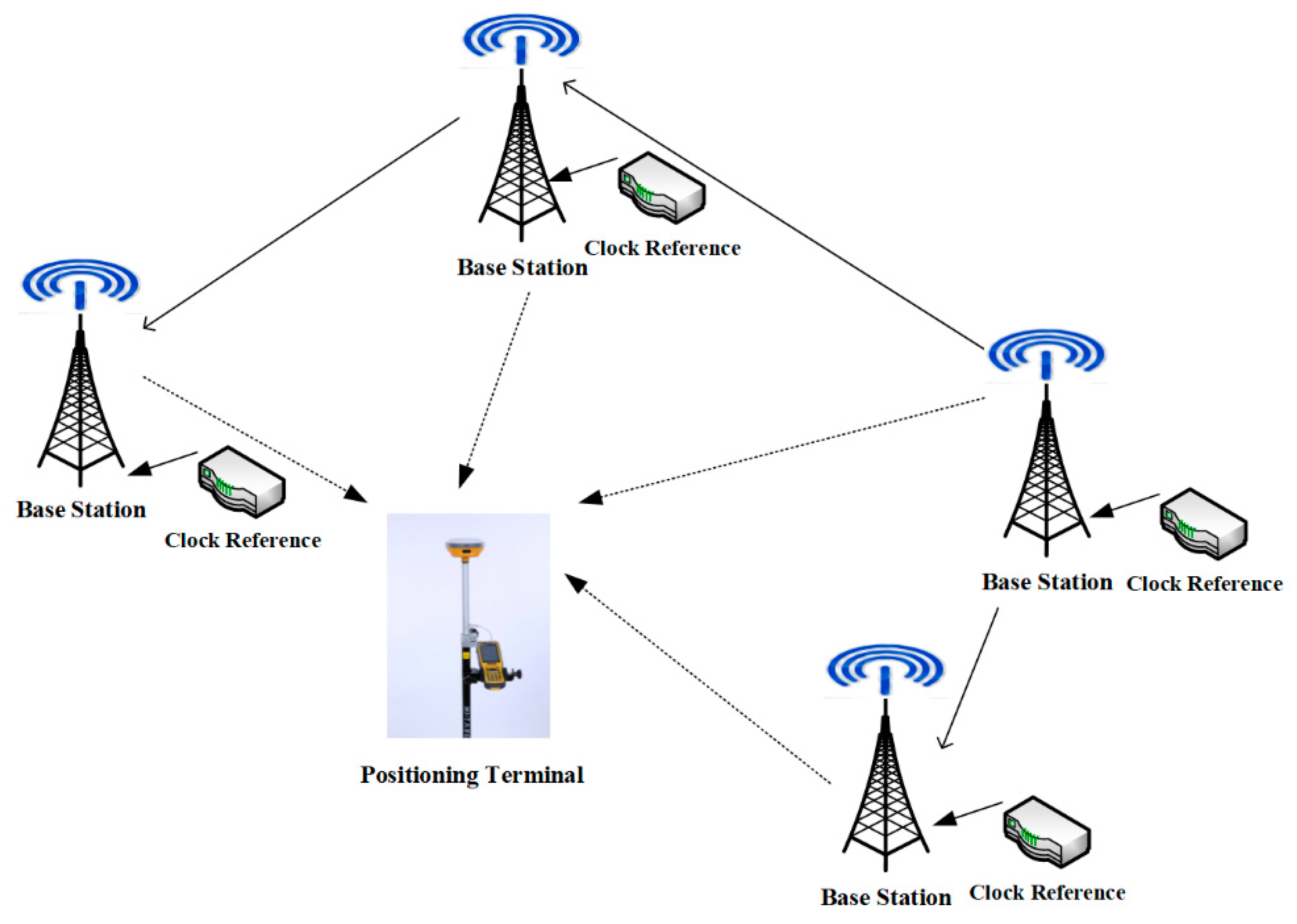

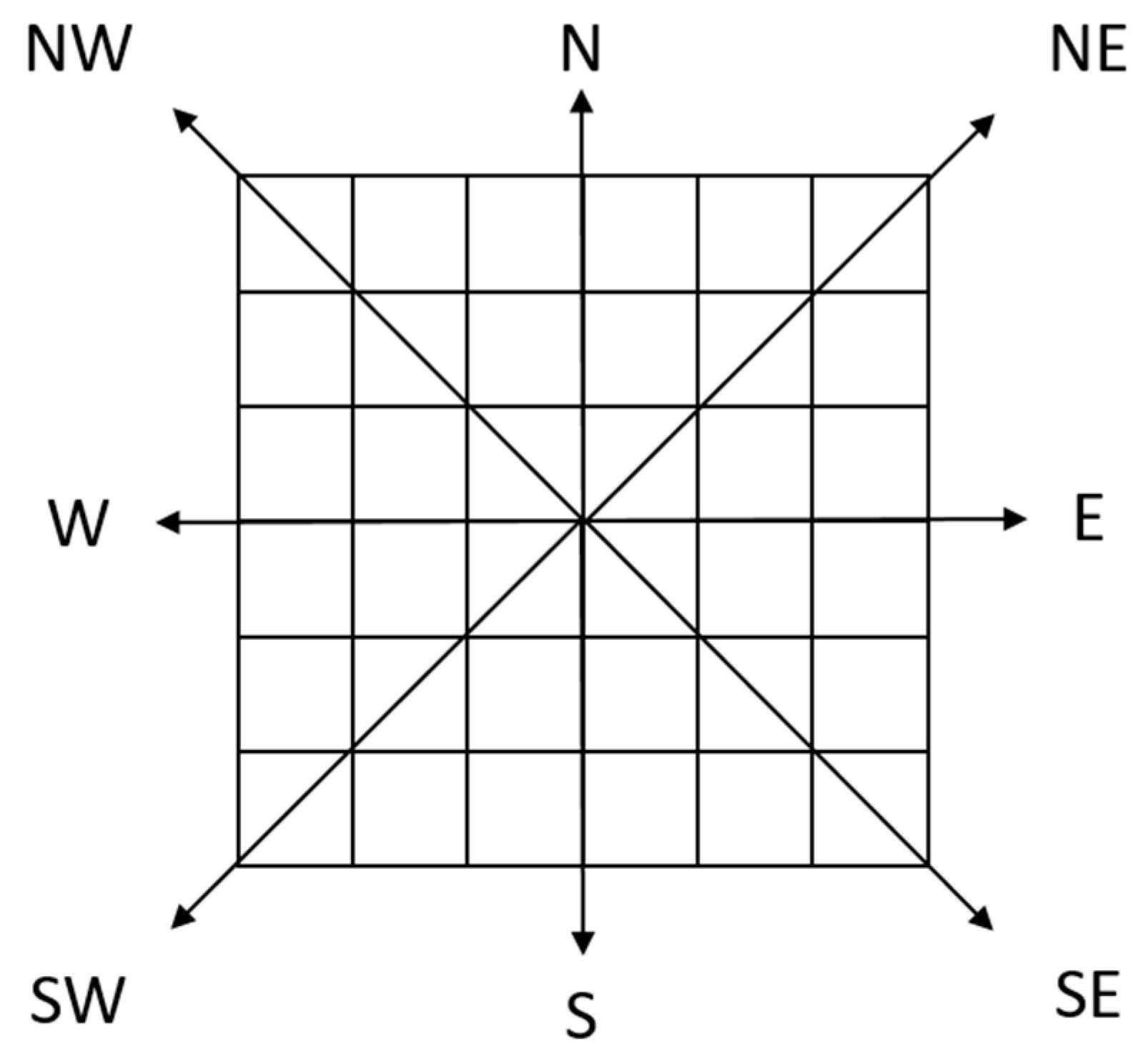
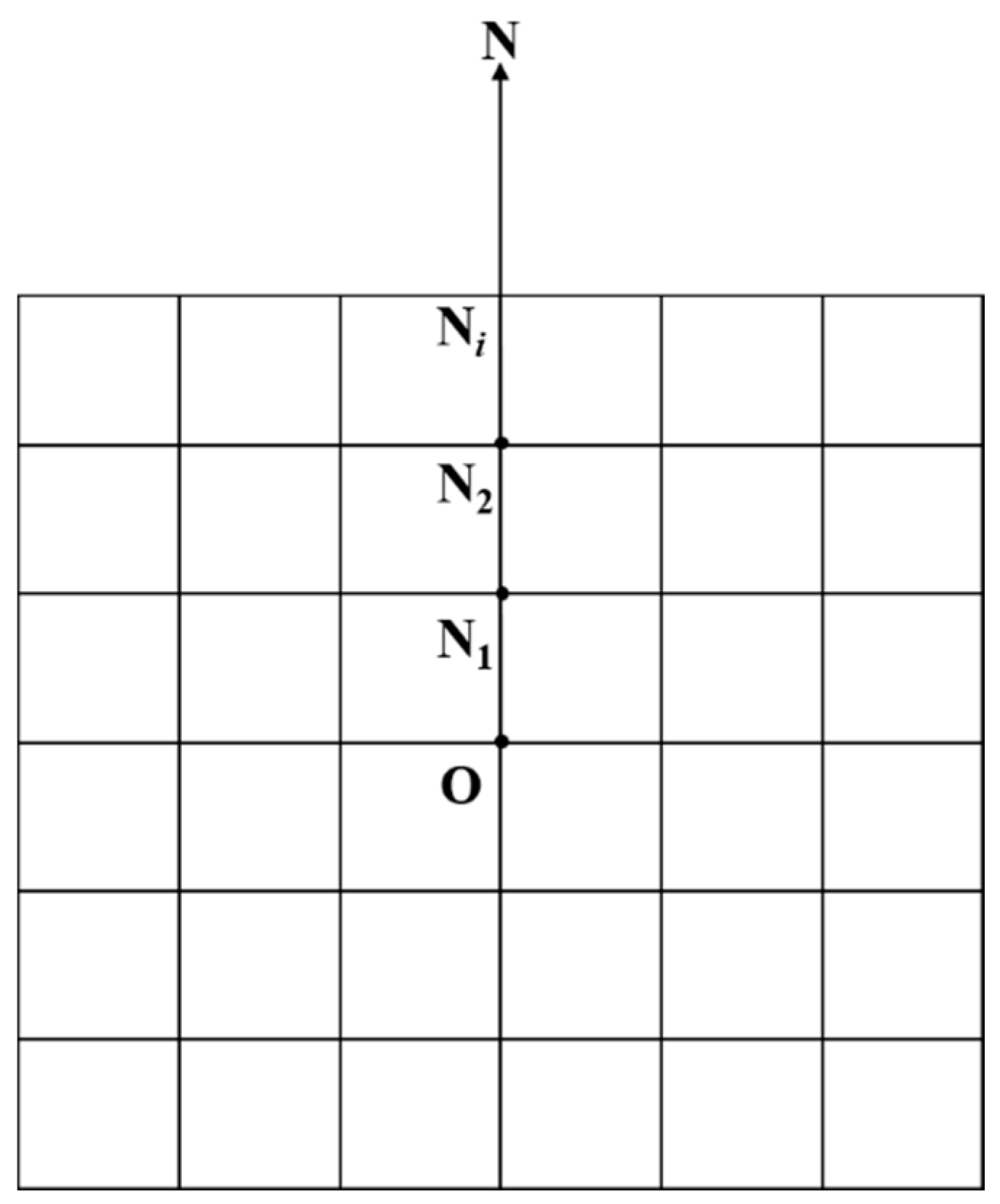


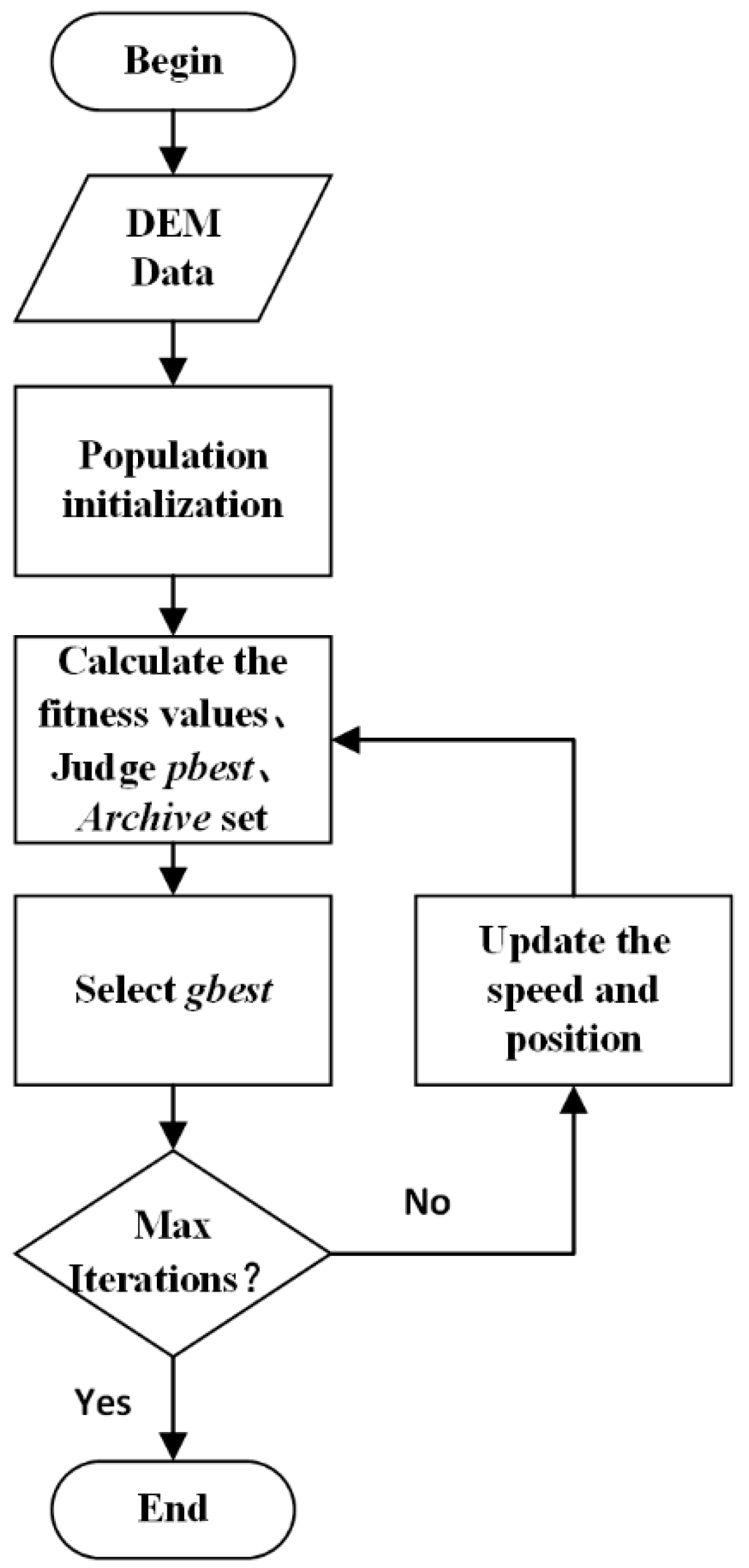
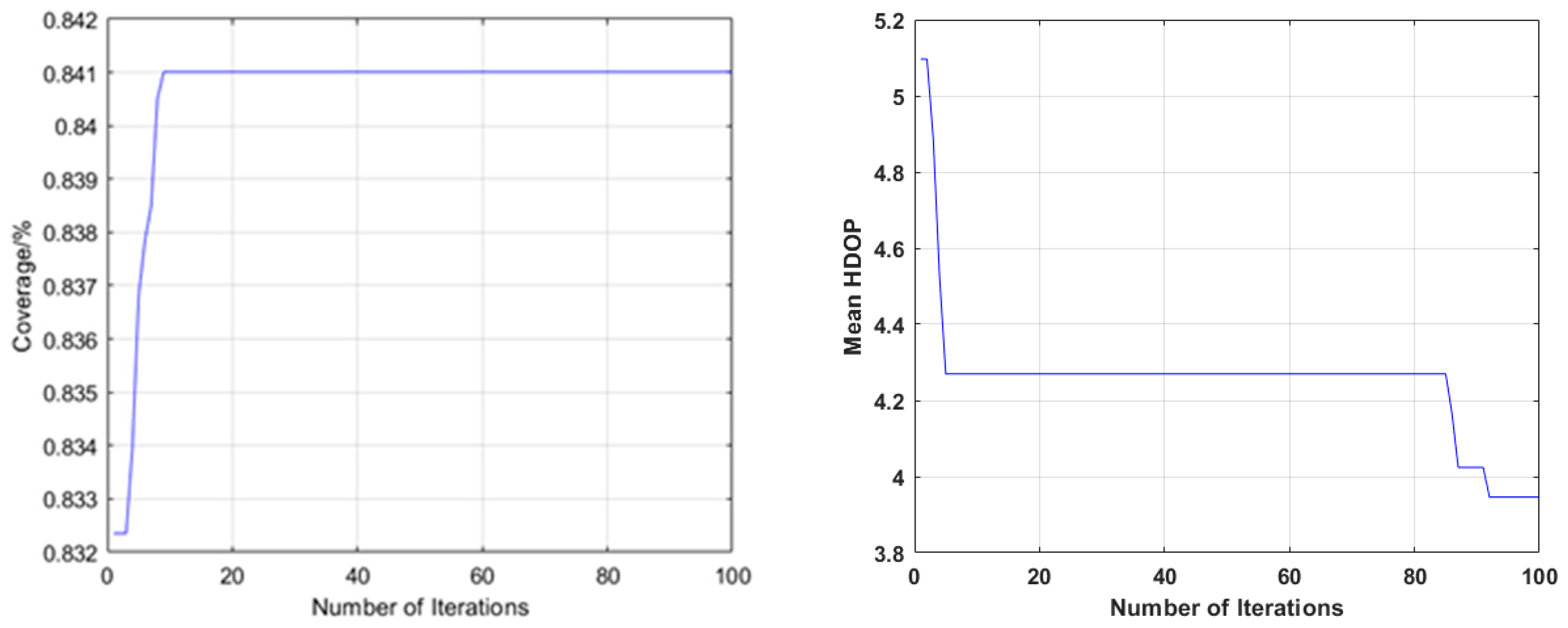
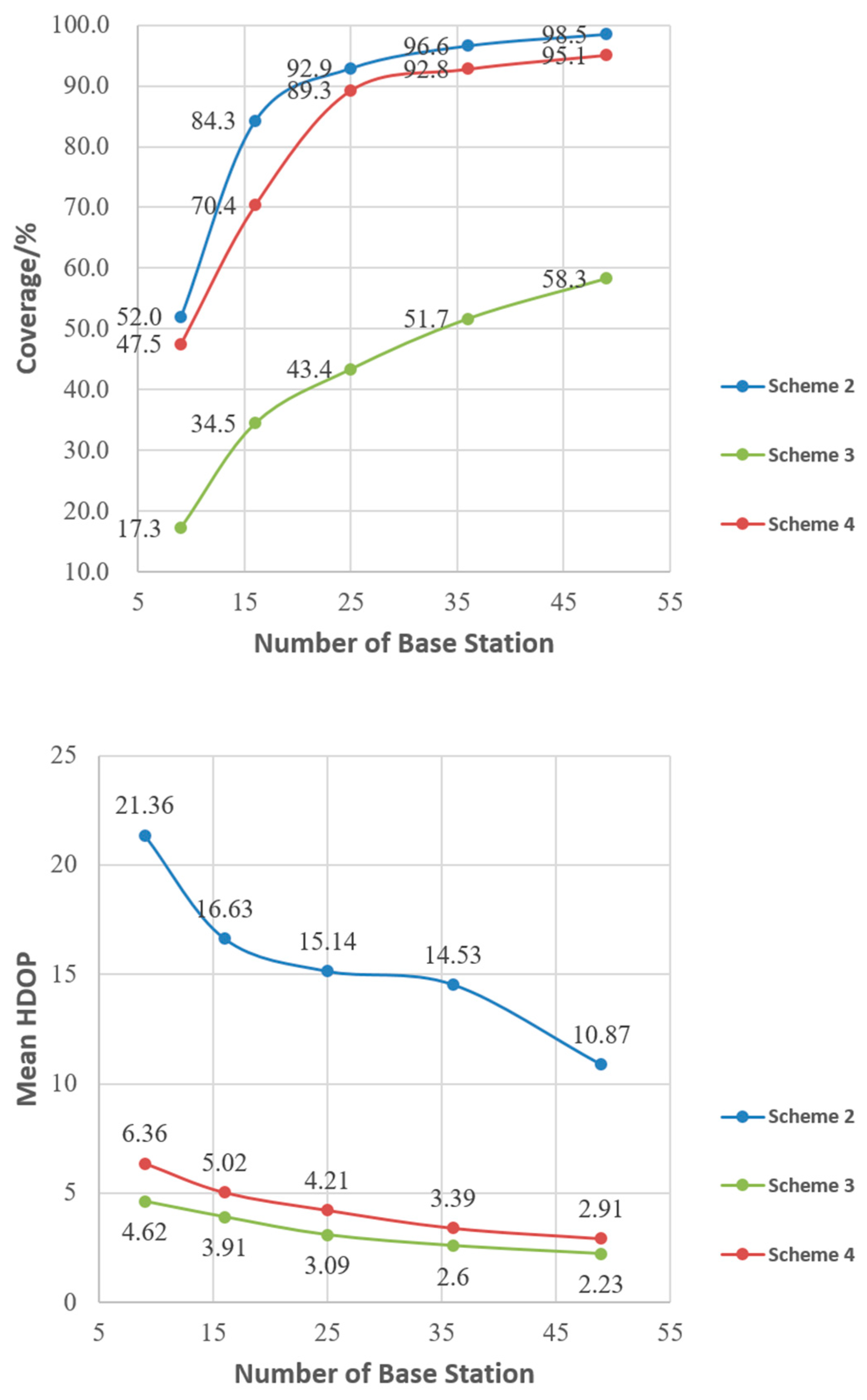
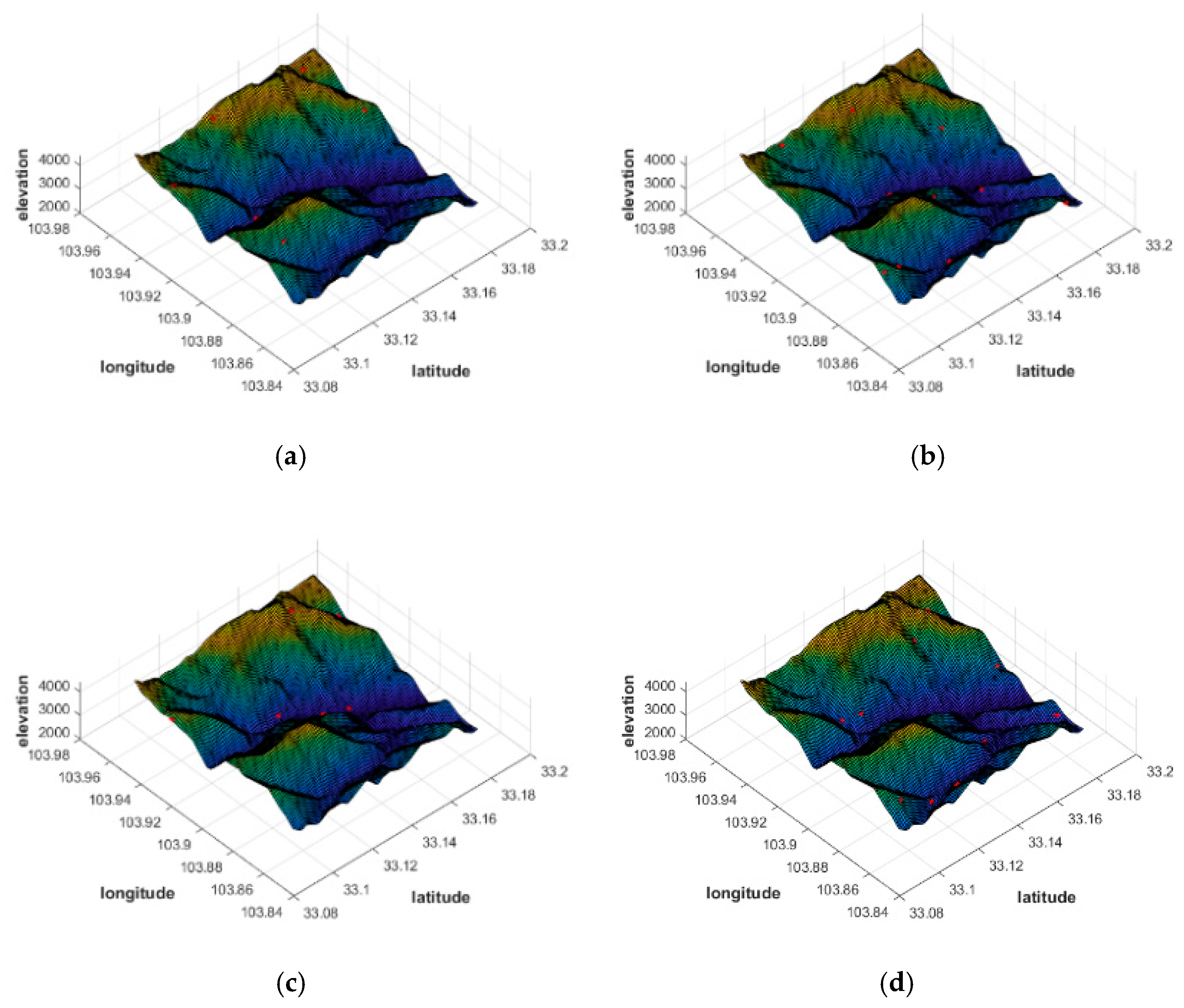
| Station Number | Scheme | Coverage/% | Mean HDOP |
|---|---|---|---|
| 9 | 1 | 7.7 | 10.07 |
| 2 | 52.0 | 21.36 | |
| 3 | 17.3 | 4.62 | |
| 4 | 47.5 | 6.36 | |
| 16 | 1 | 21.5 | 5.67 |
| 2 | 84.1 | 16.63 | |
| 3 | 34.5 | 3.91 | |
| 4 | 70.4 | 5.02 | |
| 25 | 1 | 32.6 | 4.72 |
| 2 | 92.9 | 15.14 | |
| 3 | 43.4 | 3.09 | |
| 4 | 89.3 | 4.21 | |
| 36 | 1 | 46.5 | 3.69 |
| 2 | 96.6 | 14.53 | |
| 3 | 51.7 | 2.6 | |
| 4 | 92.8 | 3.39 | |
| 49 | 1 | 56.1 | 3.19 |
| 2 | 98.5 | 10.87 | |
| 3 | 58.3 | 2.23 | |
| 4 | 95.1 | 2.91 |
| Algorithm | Number | Coverage/% | Mean HDOP |
|---|---|---|---|
| CPVO | 6 | 10.1 | 7.83 |
| 8 | 18.9 | 7.37 | |
| 10 | 22.3 | 7.54 | |
| MOPSO | 6 | 40.9 | 6.91 |
| 8 | 46.5 | 6.53 | |
| 10 | 49.3 | 6.15 |
Publisher’s Note: MDPI stays neutral with regard to jurisdictional claims in published maps and institutional affiliations. |
© 2021 by the authors. Licensee MDPI, Basel, Switzerland. This article is an open access article distributed under the terms and conditions of the Creative Commons Attribution (CC BY) license (https://creativecommons.org/licenses/by/4.0/).
Share and Cite
Tang, W.; Chen, J.; Yu, C.; Ding, J.; Wang, R. A New Ground-Based Pseudolite System Deployment Algorithm Based on MOPSO. Sensors 2021, 21, 5364. https://doi.org/10.3390/s21165364
Tang W, Chen J, Yu C, Ding J, Wang R. A New Ground-Based Pseudolite System Deployment Algorithm Based on MOPSO. Sensors. 2021; 21(16):5364. https://doi.org/10.3390/s21165364
Chicago/Turabian StyleTang, Wenjie, Junping Chen, Chao Yu, Junsheng Ding, and Ruyuan Wang. 2021. "A New Ground-Based Pseudolite System Deployment Algorithm Based on MOPSO" Sensors 21, no. 16: 5364. https://doi.org/10.3390/s21165364
APA StyleTang, W., Chen, J., Yu, C., Ding, J., & Wang, R. (2021). A New Ground-Based Pseudolite System Deployment Algorithm Based on MOPSO. Sensors, 21(16), 5364. https://doi.org/10.3390/s21165364







